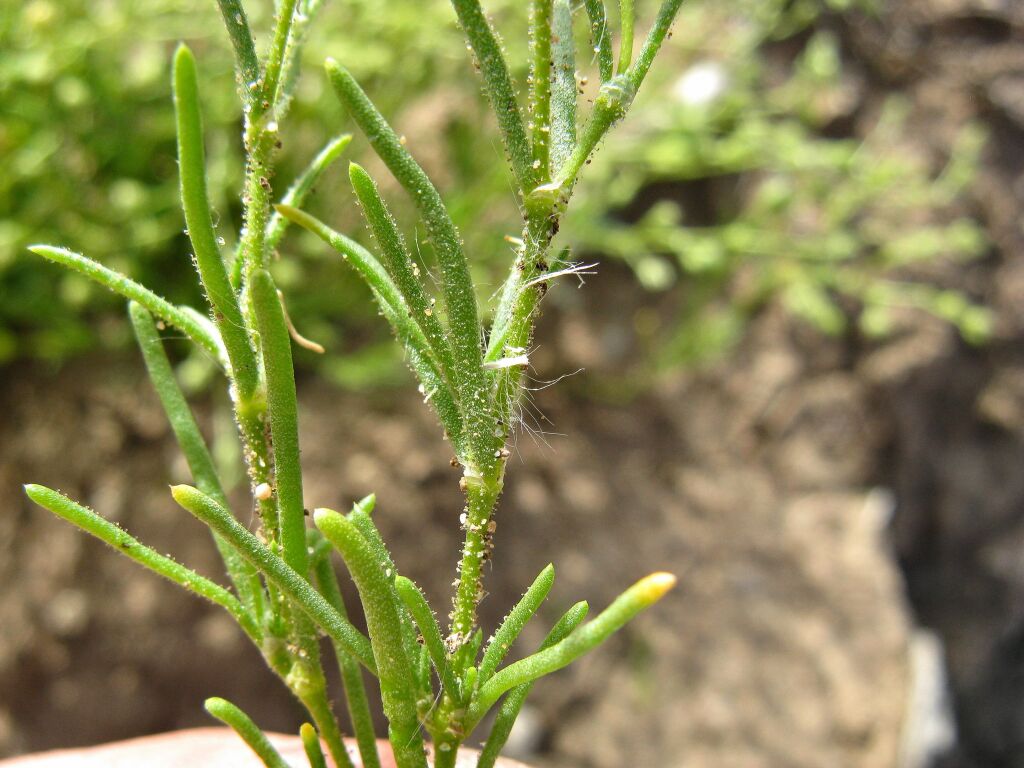Spergularia diandra
(Guss.) Heldr. Lesser Sand-spurreyAnnual, often mat-forming; taproot slender; stems slender c. 5–15 cm long, usually glabrous below inflorescence. Leaves linear-filiform, mucronate to shortly awned, sparsely fasciculate, hardly fleshy, 10–20(–35) mm long, 0.5–1 mm wide, glabrous; stipules hardly acuminate, 1.5–2.5(–3) mm long, connate for c. one-third their length, hardly silvery. Inflorescence few–many-flowered, lax, very shortly cymose; pedicels not reflexed, filiform, c. twice length of sepals, glandular-hairy. Flowers 5–6 mm diam.; sepals 2.5–3 mm long, green or purplish, with more or less dense glandular hairs 0.1–0.2 mm long; petals usually shorter than sepals, pale to bright rose-pink, the tip darker; stamens 2–3, rarely more. Capsules subglobose, c. equalling sepals; seeds 0.45–0.5 mm long, more or less smooth, tuberculate or fine-papillose, grey-brown to blackish, obscurely metallic-iridescent, unwinged. Flowers Aug.–Nov.
LoM, MuM, Wim, VRiv, MSB, RobP, MuF, OtP, NIS, HNF. Also naturalised WA, SA, NSW. Native to the Mediterranean region, Asia Minor, Middle East. A rather uncommon ephemeral weed, mostly in damp, clayey or sandy, salt-affected or calcareous soils.
Adams, L.G.; West, J.G. (1996). Spergularia. In: Walsh, N.G.; Entwisle, T.J., Flora of Victoria Vol. 3, Dicotyledons Winteraceae to Myrtaceae, pp. 257–262. Inkata Press, Melbourne.
 Spinning
Spinning



